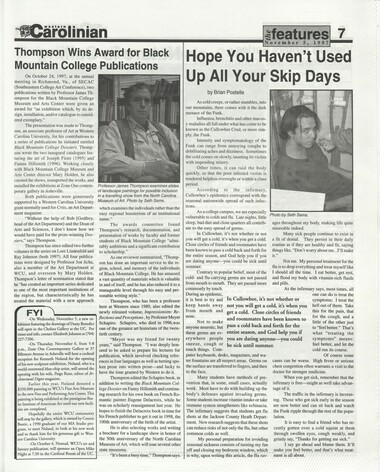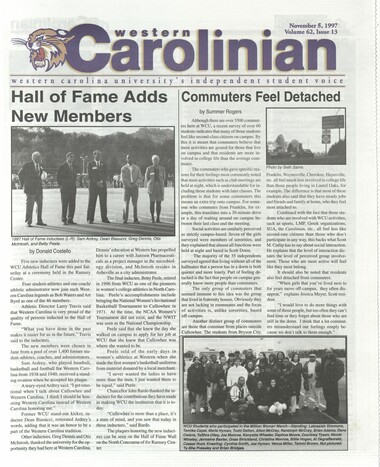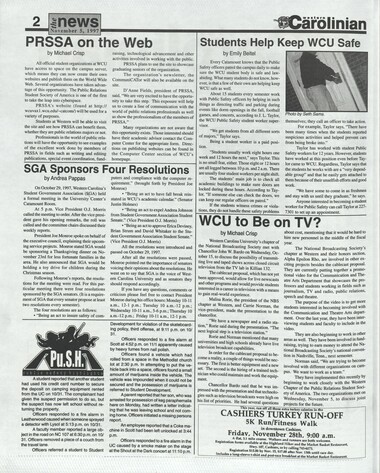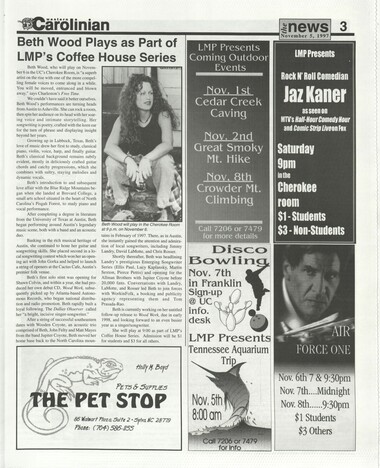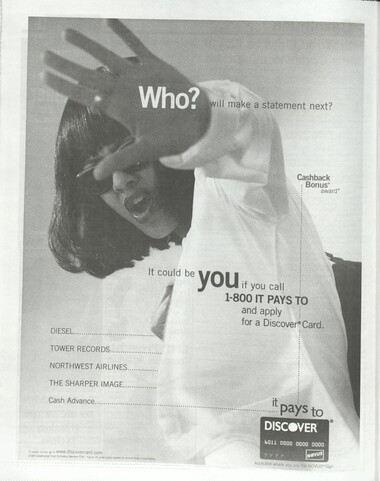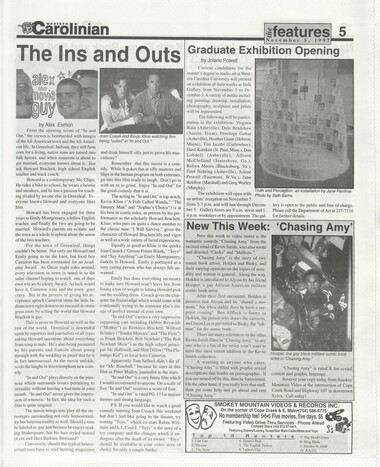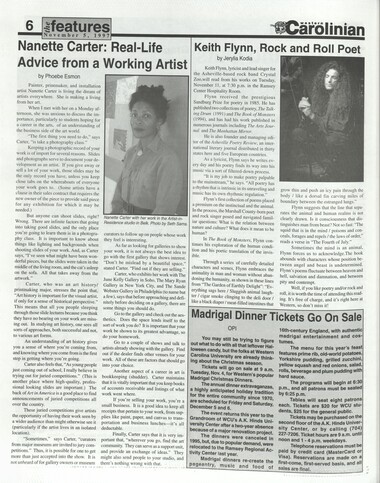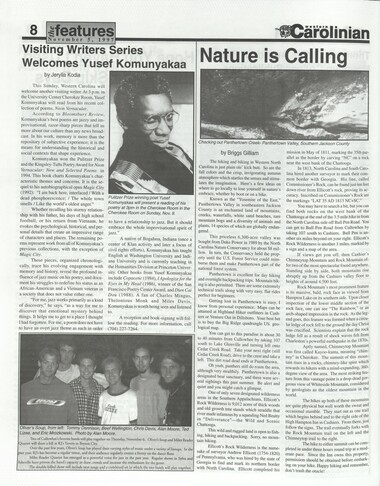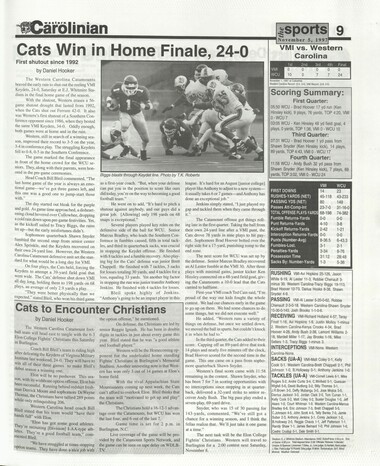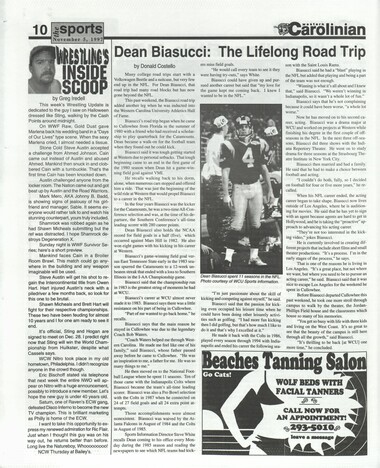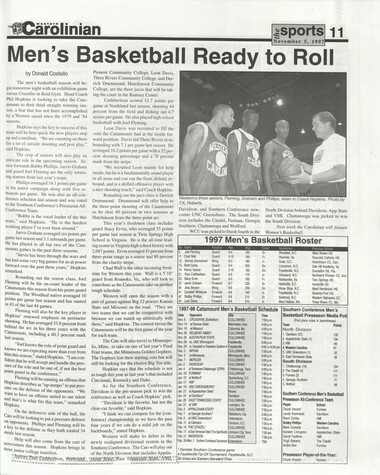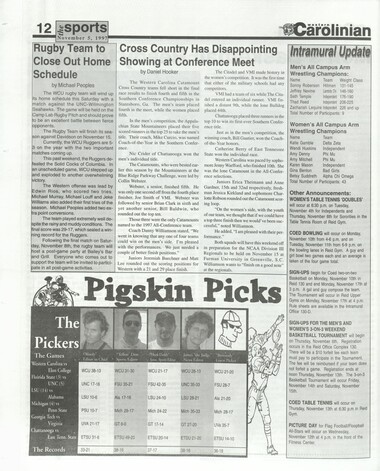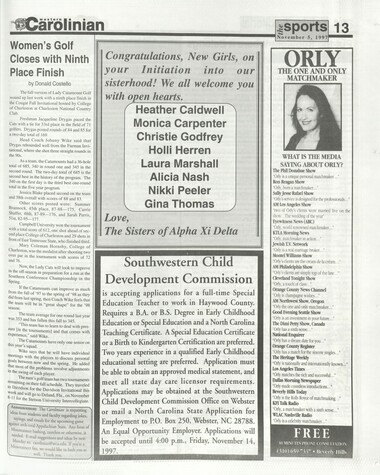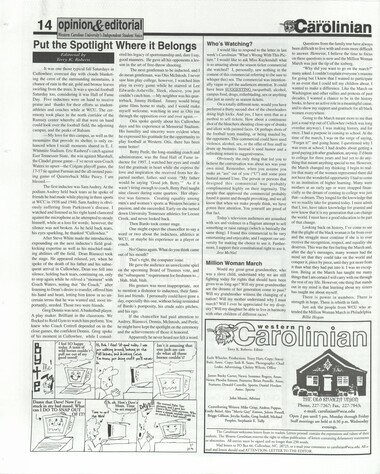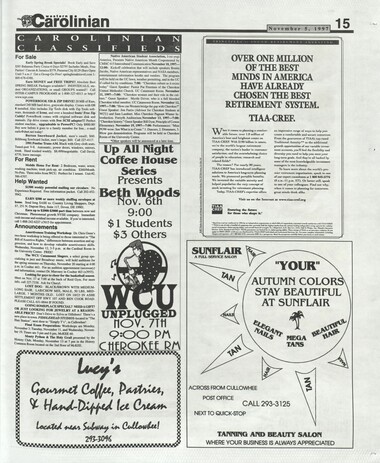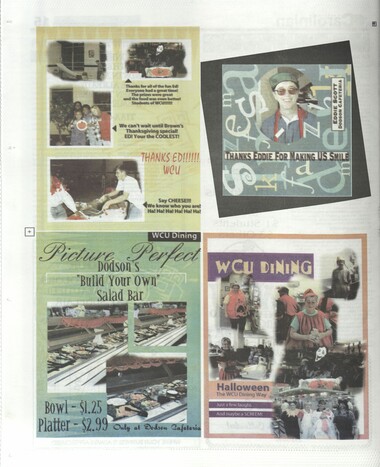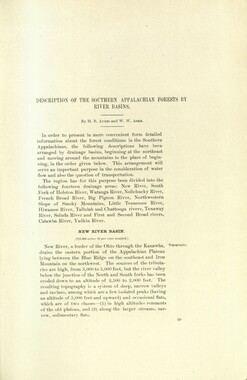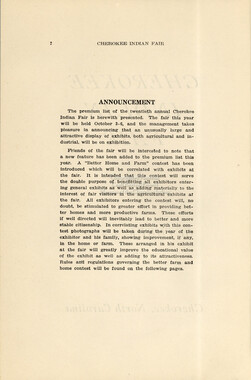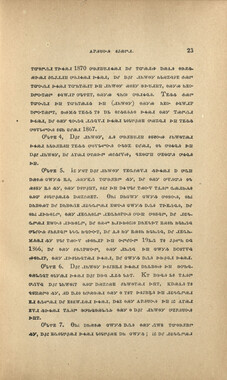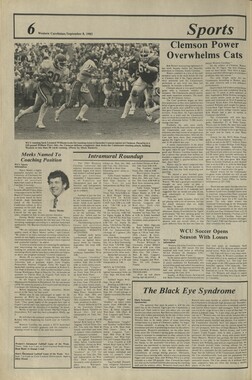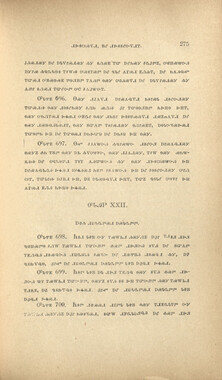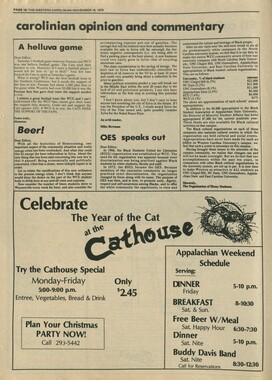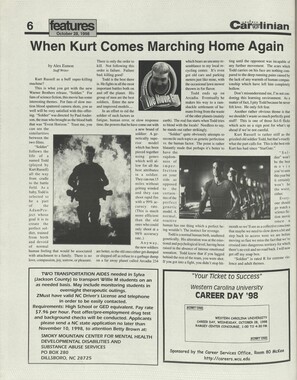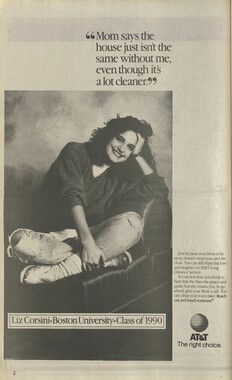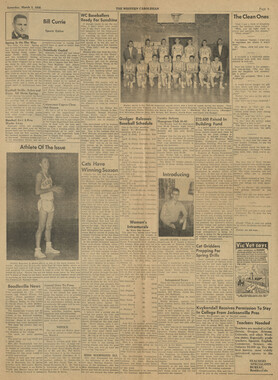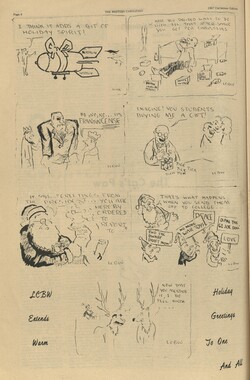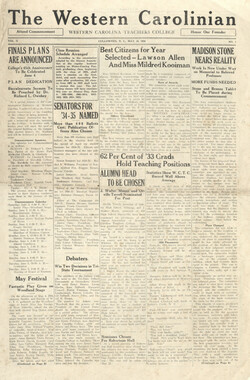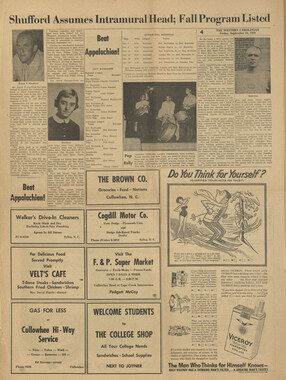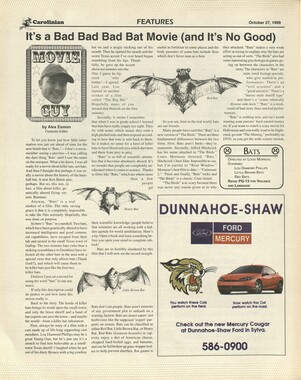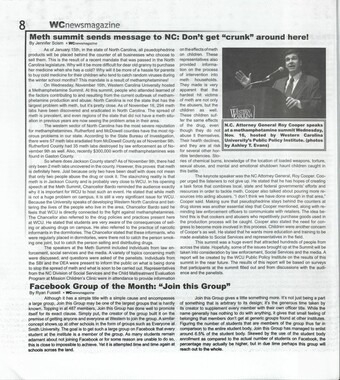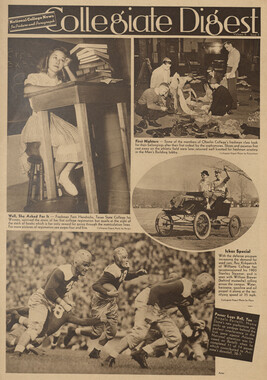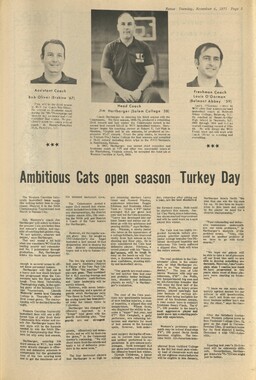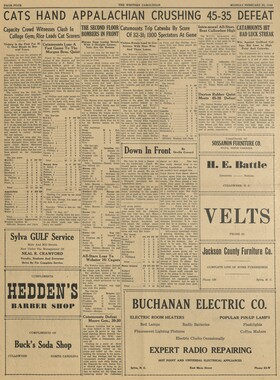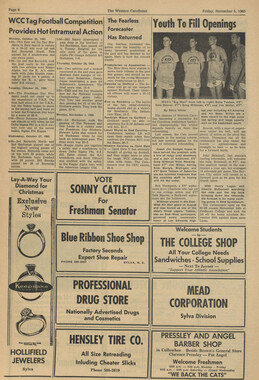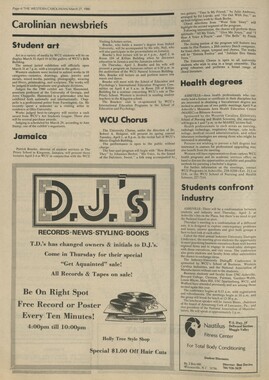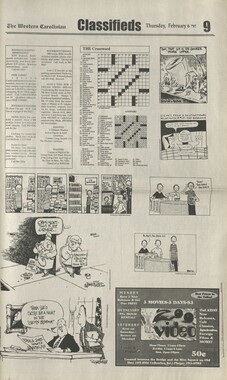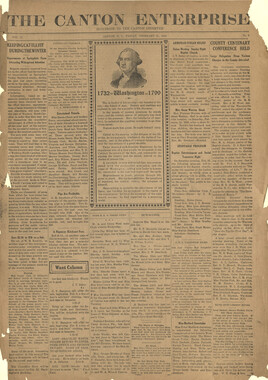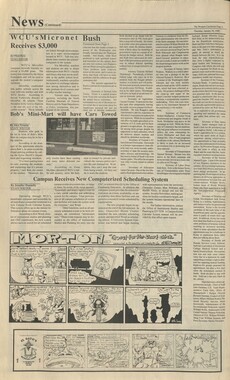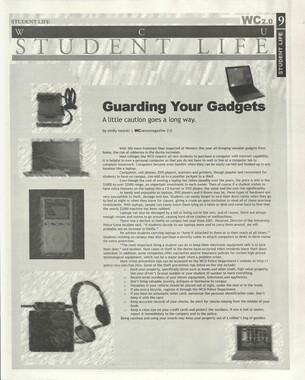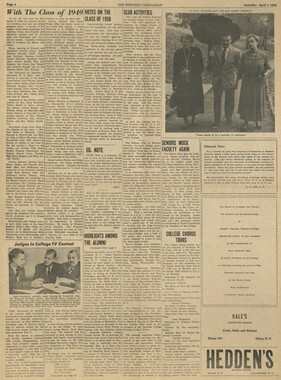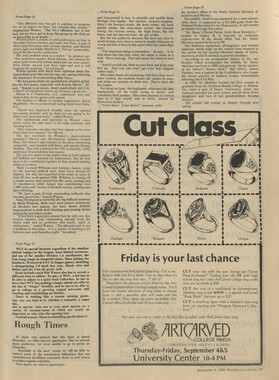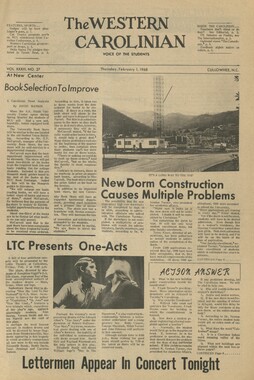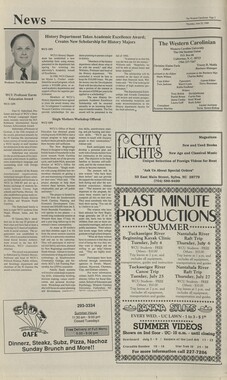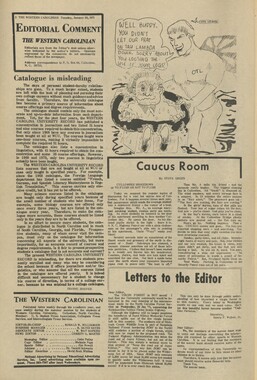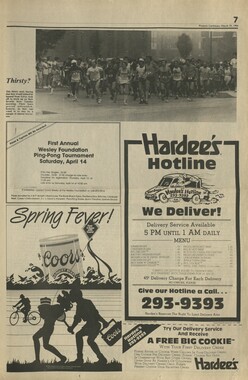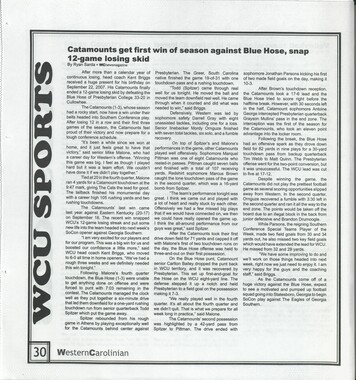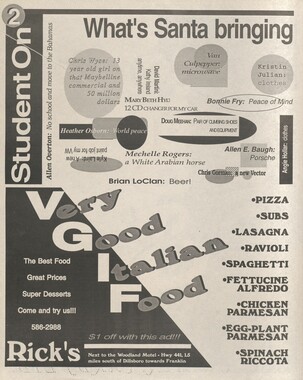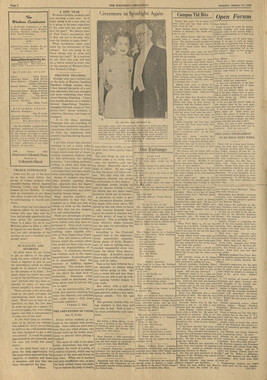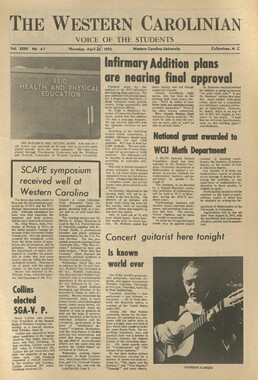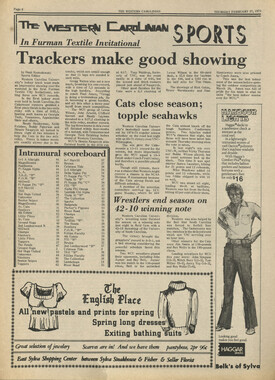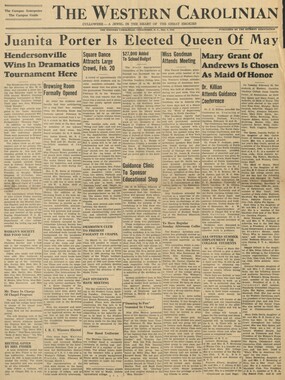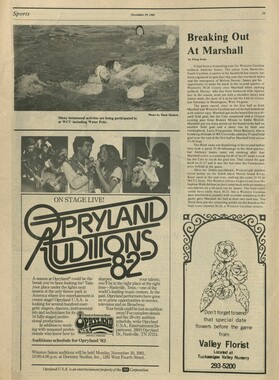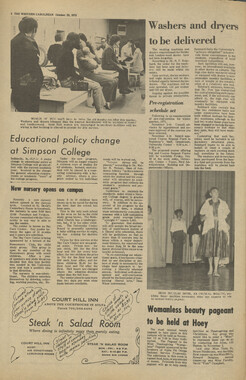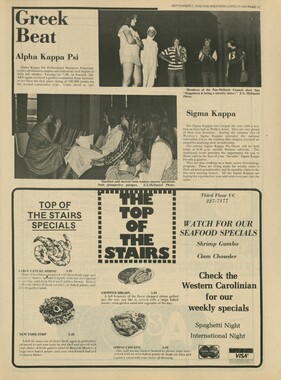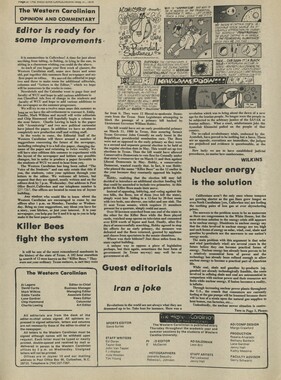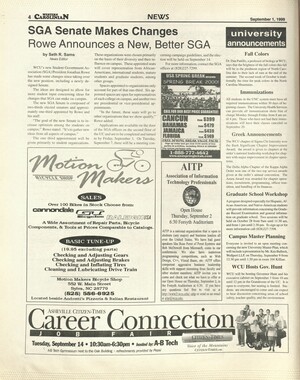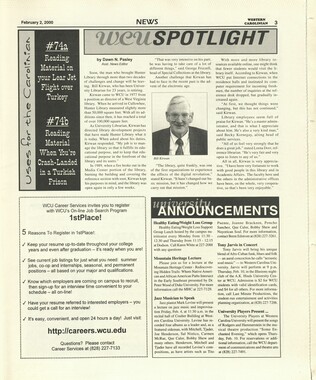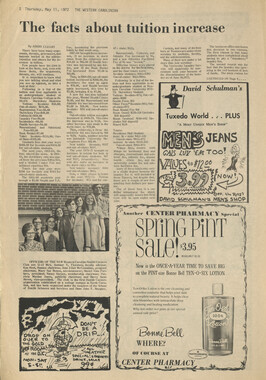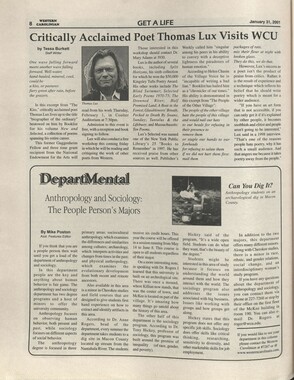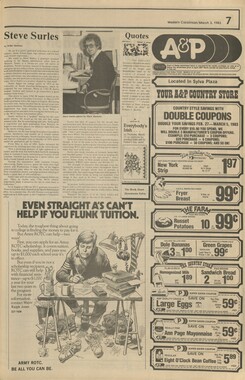Western Carolina University (21)
View all
- Canton Champion Fibre Company (2308)
- Cherokee Traditions (291)
- Civil War in Southern Appalachia (165)
- Craft Revival (1942)
- George Masa Collection (137)
- Great Smoky Mountains - A Park for America (3080)
- Highlights from Western Carolina University (422)
- Horace Kephart (973)
- Journeys Through Jackson (159)
- LGBTQIA+ Archive of Jackson County (89)
- Oral Histories of Western North Carolina (318)
- Picturing Appalachia (6617)
- Stories of Mountain Folk (413)
- Travel Western North Carolina (153)
- Western Carolina University Fine Art Museum Vitreograph Collection (129)
- Western Carolina University Herbarium (92)
- Western Carolina University: Making Memories (738)
- Western Carolina University Publications (2491)
- Western Carolina University Restricted Electronic Theses and Dissertations (146)
- Western North Carolina Regional Maps (71)
- World War II in Southern Appalachia (131)
University of North Carolina Asheville (6)
View all
- Allanstand Cottage Industries (62)
- Appalachian National Park Association (53)
- Bennett, Kelly, 1890-1974 (1463)
- Berry, Walter (76)
- Brasstown Carvers (40)
- Carver, George Washington, 1864?-1943 (26)
- Cathey, Joseph, 1803-1874 (1)
- Champion Fibre Company (233)
- Champion Paper and Fibre Company (297)
- Cherokee Indian Fair Association (16)
- Cherokee Language Program (22)
- Crowe, Amanda (40)
- Edmonston, Thomas Benton, 1842-1907 (7)
- Ensley, A. L. (Abraham Lincoln), 1865-1948 (275)
- Fromer, Irving Rhodes, 1913-1994 (70)
- George Butz (BFS 1907) (46)
- Goodrich, Frances Louisa (120)
- Grant, George Alexander, 1891-1964 (96)
- Heard, Marian Gladys (60)
- Kephart, Calvin, 1883-1969 (15)
- Kephart, Horace, 1862-1931 (313)
- Kephart, Laura, 1862-1954 (67)
- Laney, Gideon Thomas, 1889-1976 (439)
- Masa, George, 1881-1933 (61)
- McElhinney, William Julian, 1896-1953 (44)
- Niggli, Josephina, 1910-1983 (10)
- North Carolina Park Commission (105)
- Osborne, Kezia Stradley (9)
- Owens, Samuel Robert, 1918-1995 (11)
- Penland Weavers and Potters (36)
- Roberts, Vivienne (15)
- Roth, Albert, 1890-1974 (142)
- Schenck, Carl Alwin, 1868-1955 (1)
- Sherrill's Photography Studio (2565)
- Southern Highland Handicraft Guild (127)
- Southern Highlanders, Inc. (71)
- Stalcup, Jesse Bryson (46)
- Stearns, I. K. (213)
- Thompson, James Edward, 1880-1976 (226)
- United States. Indian Arts and Crafts Board (130)
- USFS (683)
- Vance, Zebulon Baird, 1830-1894 (1)
- Weaver, Zebulon, 1872-1948 (58)
- Western Carolina College (230)
- Western Carolina Teachers College (282)
- Western Carolina University (2008)
- Western Carolina University. Mountain Heritage Center (18)
- Whitman, Walt, 1819-1892 (10)
- Wilburn, Hiram Coleman, 1880-1967 (73)
- Williams, Isadora (3)
- Cain, Doreyl Ammons (0)
- Crittenden, Lorraine (0)
- Rhodes, Judy (0)
- Smith, Edward Clark (0)
- Appalachian Region, Southern (3032)
- Asheville (N.C.) (1945)
- Avery County (N.C.) (26)
- Blount County (Tenn.) (195)
- Buncombe County (N.C.) (1680)
- Cherokee County (N.C.) (283)
- Clay County (N.C.) (556)
- Graham County (N.C.) (238)
- Great Smoky Mountains National Park (N.C. and Tenn.) (525)
- Haywood County (N.C.) (3573)
- Henderson County (N.C.) (70)
- Jackson County (N.C.) (4925)
- Knox County (Tenn.) (35)
- Knoxville (Tenn.) (13)
- Lake Santeetlah (N.C.) (10)
- Macon County (N.C.) (421)
- Madison County (N.C.) (216)
- McDowell County (N.C.) (39)
- Mitchell County (N.C.) (135)
- Polk County (N.C.) (35)
- Qualla Boundary (982)
- Rutherford County (N.C.) (78)
- Swain County (N.C.) (2185)
- Transylvania County (N.C.) (270)
- Watauga County (N.C.) (12)
- Waynesville (N.C.) (86)
- Yancey County (N.C.) (72)
- Aerial Photographs (3)
- Aerial Views (60)
- Albums (books) (4)
- Articles (1)
- Artifacts (object Genre) (228)
- Bibliographies (1)
- Biography (general Genre) (2)
- Cards (information Artifacts) (38)
- Clippings (information Artifacts) (192)
- Copybooks (instructional Materials) (3)
- Crafts (art Genres) (622)
- Depictions (visual Works) (21)
- Design Drawings (1)
- Digital Moving Image Formats (2)
- Drawings (visual Works) (185)
- Envelopes (101)
- Exhibitions (events) (1)
- Facsimiles (reproductions) (1)
- Fiction (general Genre) (4)
- Financial Records (12)
- Fliers (printed Matter) (67)
- Glass Plate Negatives (381)
- Guidebooks (2)
- Internegatives (10)
- Interviews (823)
- Land Surveys (102)
- Letters (correspondence) (1045)
- Manuscripts (documents) (618)
- Maps (documents) (177)
- Memorandums (25)
- Minutes (administrative Records) (59)
- Negatives (photographs) (6090)
- Newsletters (1290)
- Newspapers (2)
- Notebooks (8)
- Occupation Currency (1)
- Paintings (visual Works) (1)
- Pen And Ink Drawings (1)
- Periodicals (194)
- Personal Narratives (10)
- Photographs (12977)
- Plans (maps) (1)
- Poetry (6)
- Portraits (4568)
- Postcards (329)
- Programs (documents) (181)
- Publications (documents) (2444)
- Questionnaires (65)
- Relief Prints (26)
- Sayings (literary Genre) (1)
- Scrapbooks (282)
- Sheet Music (2)
- Slides (photographs) (402)
- Songs (musical Compositions) (2)
- Sound Recordings (802)
- Specimens (92)
- Speeches (documents) (18)
- Tintypes (photographs) (8)
- Transcripts (329)
- Text Messages (0)
- A.L. Ensley Collection (275)
- Appalachian Industrial School Records (7)
- Appalachian National Park Association Records (336)
- Axley-Meroney Collection (2)
- Bayard Wootten Photograph Collection (20)
- Bethel Rural Community Organization Collection (7)
- Blumer Collection (5)
- C.W. Slagle Collection (20)
- Canton Area Historical Museum (2110)
- Carlos C. Campbell Collection (462)
- Cataloochee History Project (64)
- Cherokee Studies Collection (4)
- Daisy Dame Photograph Album (5)
- Daniel Boone VI Collection (1)
- Doris Ulmann Photograph Collection (112)
- Elizabeth H. Lasley Collection (1)
- Elizabeth Woolworth Szold Fleharty Collection (4)
- Frank Fry Collection (95)
- George Masa Collection (173)
- Gideon Laney Collection (452)
- Hazel Scarborough Collection (2)
- Hiram C. Wilburn Papers (28)
- Historic Photographs Collection (236)
- Horace Kephart Collection (861)
- Humbard Collection (33)
- Hunter and Weaver Families Collection (1)
- I. D. Blumenthal Collection (4)
- Isadora Williams Collection (4)
- Jesse Bryson Stalcup Collection (47)
- Jim Thompson Collection (224)
- John B. Battle Collection (7)
- John C. Campbell Folk School Records (80)
- John Parris Collection (6)
- Judaculla Rock project (2)
- Kelly Bennett Collection (1482)
- Love Family Papers (11)
- Major Wiley Parris Civil War Letters (3)
- Map Collection (12)
- McFee-Misemer Civil War Letters (34)
- Mountain Heritage Center Collection (4)
- Norburn - Robertson - Thomson Families Collection (44)
- Pauline Hood Collection (7)
- Pre-Guild Collection (2)
- Qualla Arts and Crafts Mutual Collection (12)
- R.A. Romanes Collection (681)
- Rosser H. Taylor Collection (1)
- Samuel Robert Owens Collection (94)
- Sara Madison Collection (144)
- Sherrill Studio Photo Collection (2558)
- Smoky Mountains Hiking Club Collection (616)
- Stories of Mountain Folk - Radio Programs (374)
- The Reporter, Western Carolina University (510)
- Venoy and Elizabeth Reed Collection (16)
- WCU Gender and Sexuality Oral History Project (36)
- WCU Mountain Heritage Center Oral Histories (25)
- WCU Oral History Collection - Mountain People, Mountain Lives (71)
- WCU Students Newspapers Collection (1923)
- Western North Carolina Tomorrow Black Oral History Project (69)
- William Williams Stringfield Collection (2)
- Zebulon Weaver Collection (109)
- African Americans (390)
- Appalachian Trail (35)
- Artisans (521)
- Cherokee art (84)
- Cherokee artists -- North Carolina (10)
- Cherokee language (21)
- Cherokee pottery (101)
- Cherokee women (208)
- Church buildings (190)
- Civilian Conservation Corps (U.S.) (111)
- College student newspapers and periodicals (2012)
- Dams (108)
- Dance (1023)
- Education (222)
- Floods (63)
- Folk music (1015)
- Forced removal, 1813-1903 (2)
- Forest conservation (220)
- Forests and forestry (1198)
- Gender nonconformity (4)
- Great Smoky Mountains National Park (N.C. and Tenn.) (181)
- Hunting (47)
- Landscape photography (25)
- Logging (122)
- Maps (83)
- Mines and mineral resources (9)
- North Carolina -- Maps (18)
- Paper industry (38)
- Postcards (255)
- Pottery (135)
- Railroad trains (72)
- Rural electrification -- North Carolina, Western (3)
- School integration -- Southern States (2)
- Segregation -- North Carolina, Western (5)
- Slavery (5)
- Sports (452)
- Storytelling (243)
- Waterfalls -- Great Smoky Mountains (N.C. and Tenn.) (66)
- Weaving -- Appalachian Region, Southern (280)
- Wood-carving -- Appalachian Region, Southern (328)
- World War, 1939-1945 (173)
Western Carolinian Volume 62 (63) Number 13
Item
Item’s are ‘child’ level descriptions to ‘parent’ objects, (e.g. one page of a whole book).
-
-
western ■ a • arolmian Thompson Wins Award for Black Mountain College Publications On October 24, 1997, at the annual meeting in Richmond, Va., of SECAC (Southeastern College Art Conference), two publications written by Professor James Thompson for the Black Mountain College Museum and Arts Center were given an award for "an exhibition which, by its design, installation, and/or catalogue is considered exemplary." The presentation was made to Thompson, an associate professor of Art at Western Carolina University, for his contributions to a series of publications he initiated entitled Black Mountain College Dossiers. Thompson wrote the two inaugural catalogues featuring the art of Joseph Fiore (1995) and Fannie Hillsmith (1996). Working closely with Black Mountain College Museum and Arts Center director Mary Holden, he also curated the shows, transported the works, and installed the exhibitions at Zone One contemporary gallery in Asheville. Both publications were generously supported by a Western Carolina University grant normally used for Crits, an Art Department magazine. "Without the help of Bob [Godfrey, head ofthe Art Department] and the Dean of Arts and Sciences, I don't know how we would have paid for the prize-winning Dossiers," says Thompson. Thompson has since edited two further volumes in the series on Lore Lindenfeld and Ray Johnson (both 1997). All four publications were designed by Professor Jon Jicha, also a member of the Art Department at WCU, and overseen by Mary Holden. Thompson's letter of nomination stated that he "has created an important series dedicated to one of the most important institutions of the region, but characteristically he has treated the material with a new approach rFYi\ -On Wednesday, November 5, a new exhibition featuring the drawings of Dusty Benedict will open in the Chelsea Gallery at the UC. For times and info, contact Elizabeth Johnson at (704) 227-7206. -On Thursday, November 6, from 5-8 p.m., Zone One Contemporary Gallery at 37 Biltmore Avenue in Asheville will host a cocktail reception for Kenneth Noland for the opening of his new sculpture exhibition. Noland, who is a world-renowned blue-chip artist, will attend the opening with his wife, Paige Renz, editor of Architectural Digest magazine. Earlier this year, Noland donated a $350,000 painting to WCU's Fine Arts Museum in the new Fine and Performing Arts Center. This painting is being exhibited at the prestigious Butler Institute of American Art until our new facilities are completed. Hopefully the entire WCU community will stop by the gallery, which is owned by Connie Bostic, a 1990 graduate of our MA Studio program, to meet Noland, to look at his new work and to thank him for his generous gift to Western Carolina University. -On October 6, Nomad, WCU's art and literary publication, will sponsor an Open Mike Night at 7:30 in the Cardinal Room ofthe UC. Professor James Thompson examines slides of landscape paintings for possible inclusion in a travelling show from the North Carolina Museum of Art. Photo by Seth Sams. which examines the individuals rather than the easy regional boosterism of an institutional name." The awards committee found Thompson's research, documentation, and presentation of works by faculty and former students of Black Mountain College "admirably ambitious and a significant contribution to scholarship." As one reviewer summarized, "Thompson has done an important service to the region, school, and memory of the individuals of Black Mountain College. He has amassed a vast quantity of materials which is valuable in and of itself, and he has also reduced it to a manageable level through his easy and personable writing style." Thompson, who has been a professor here at Western since 1989, also edited the newly released volume, Impressionism: Reflections and Perceptions, by Professor Meyer Schapiro. Schapiro, who died in 1996,was one of the greatest art historians of the twentieth century. "Meyer was my friend for twenty years," said Thompson. "I was deeply honored to be asked to prepare his lectures for publication, which involved checking references in four languages as well as turning spoken prose into written prose—and lucky to have the time granted by Western to do it. Thompson edited the Schapiro book, in addition to writing the Black Mountain College Dossier on Fanny Hillsmith and continuing research for his own book on French Romantic painter Eugene Delacroix, while he was on scholarly reassignment last year. He hopes to finish the Delacroix book in time for his French publisher to get it out in 1998, the 100th anniversary of the birth of the artist. He is also selecting works and writing a brochure for a landscape show in honor of the 50th anniversary of the North Carolina Museum of Art, which will tour several other state museums. "It's been a busy time," Thompson says. ^features November 5, 19 97 Hope You Haven't Used Up All Your Skip Days by Brian Postelle As cold creeps, or rather stumbles, into our mountains, there comes with it the dark menace of the Funk. Influenza, bronchitis and other mucus- y maladies all fall under what has come to be known as the Cullowhee Crud, or more simply, the Funk. Intensity and symptomatology of the Funk can range from annoying coughs to debilitating aches and dizziness. Sometimes the cold comes on slowly, taunting its victim with impending misery. Other times, it can raid the body quickly, so that the poor infected victim is rendered helpless overnight or within a class period. According to the infirmary, Cullowhee's epidemics correspond with the seasonal nationwide spread of such infections. As a college campus, we are especially vulnerable to colds and flu. Late nights, little sleep, bad diet and close quarters all contribute to the easy spread of germs. In Cullowhee, it's not whether or not you will get a cold, it's when you get a cold. Close circles of friends and roommates have been known to pass a cold back and forth for the entire season, and God help you if you are dating anyone—you could be sick until summer. Contrary to popular belief, most of the cold- and flu-carrying germs are not passed from mouth to mouth. They are passed more commonly by touch. During an epidemic, it is best to try and keep hands away from mouth and nose. Not to make anyone neurotic, but these germs are ev- cases can be worse. In Cullowhee, it's not whether or not you will get a cold, it's when you get a cold. Close circles of friends and roommates have been known to pass a cold back and forth for the entire season, and God help you if erywhere people you are dating anyone—you could sneeze, cough or be sick until summer. touch things. Computer keyboards, desks, magazines, and water fountains are all suspect areas. Germs on the surface are transferred to fingers, and then to the face. Many students have methods of prevention that, in some, small cases, actually work. Most have to do with building up the body's defenses against invading germs. Some students increase vitamin intake or take immune system stengtheners like echinacia. The infirmary suggests that students get flu shots at the Jackson County Heath Department. New research suggests that these shots can reduce risks of not only the flu, but other common colds as well. My personal preparation for avoiding seasonal sickness consists of turning my fan off and closing my bedroom window, which is why, upon writing this article, the flu rav- Photo by Seth Sams. ages throughout my body, making life quite miserable indeed. Many sick people continue to exist in a fit of denial. They persist in their daily routine as if they are healthy and fit, saying things like, "Don't worry about me...I'll make it." Not me. My personal treatment for the flu is to drop everything and treat myself like I should all the time. I eat better, get rest, and flood my body with vitamin-rich fluids and pills. As the infirmary says, most times, all one can do is treat the symptoms; I treat the hell out of them. Take this for the pain, that for the cough, and a little of the other just to "feel better." That's what "treating the symptoms" means: feel better, and let the cold run its course. Of course some High fever or serious chest congestion often warrants a visit to the doctor for stronger medicine. When you get sick, remember that the infirmary is free—might as well take advantage of it. The traffic in the infirmary is increasing. Those who got sick early in the season are now better and can sit back and watch the Funk ripple through the rest of the population. It is easy to find a friend who has recently gotten over a cold squint at them through swollen eyes, cough weakly, and grimly say, 'Thanks for getting me sick." I say go ahead and blame them. It'll make you feel better, and that's what treatment is all about.
Object
Object’s are ‘parent’ level descriptions to ‘children’ items, (e.g. a book with pages).
-
The Western Carolinian is Western Carolina University's student-run newspaper. The paper was published as the Cullowhee Yodel from 1924 to 1931 before changing its name to The Western Carolinian in 1933.
-
